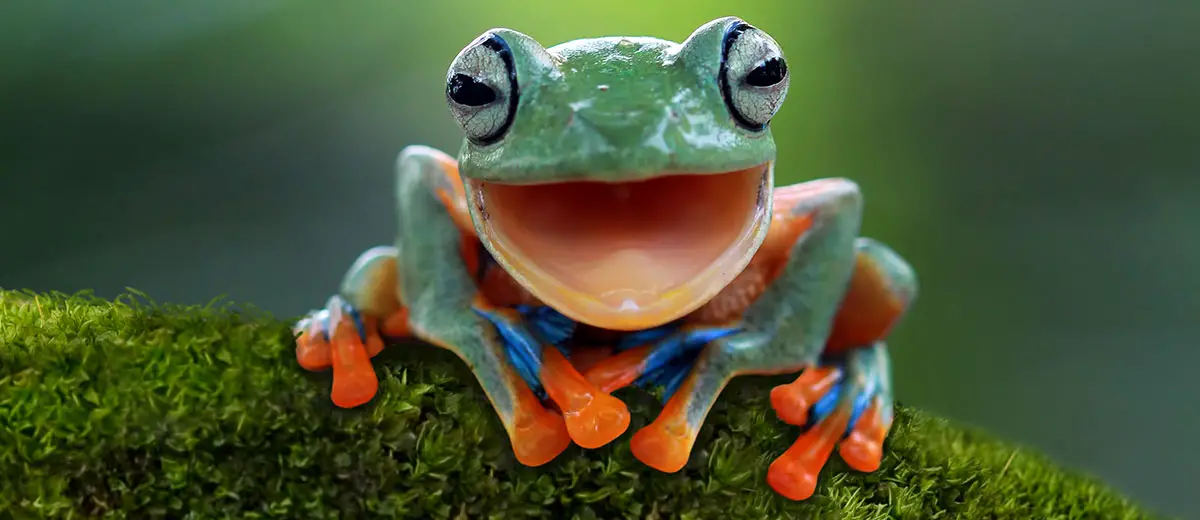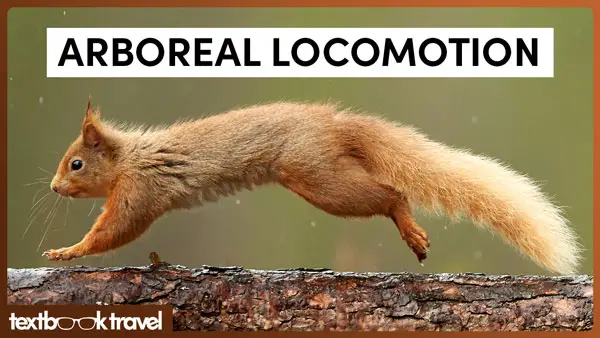How Animals Climb Trees | Arboreal Locomotion
The act of navigating a tree poses several problems. To begin with, a vertical ascent is required to pass the trunk, this requires grip, and for larger individuals, power and strength. Animals such as squirrels use their sharp claws to grip the soft bark, whereas others such as tree frogs have oversized digits, boosting the surface area of their feet and enabling almost unbelievable acrobatic stunts. The smaller the animal the less affected they are by the pull of gravity and the more effortless their climb. Birds and other flying creatures such as bats possess the ability to skip the trunk altogether but still exhibit sharp claws for grip.

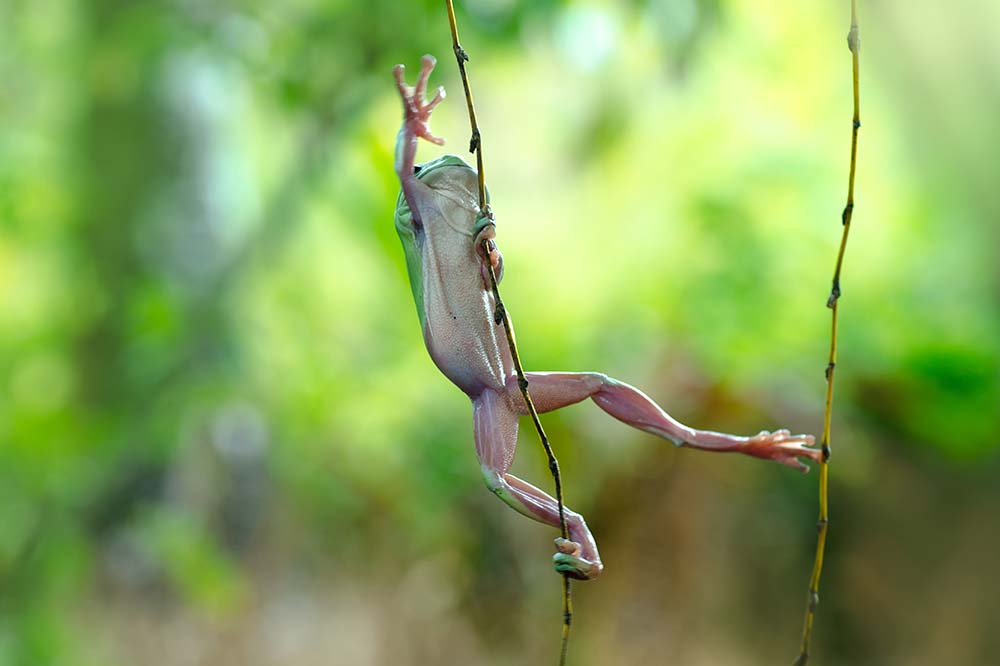
Left: Squirrel climbing a tree | Tatiana Volgutova / Shutterstock & Right: Green tree frog climbing | Tukangkodak / Shutterstock
Once an animal has successfully entered the tree, they must traverse the network of branches skillfully without tipping over and falling. Branches are typically narrow and sometimes steep but always require balance to navigate safely. There are various ways to achieve this. Many arboreal animals are quadrupedal, bearing weight on all four limbs; this increases the number of contact points and positions their centre of mass closer to the branch making them much less likely to topple over.
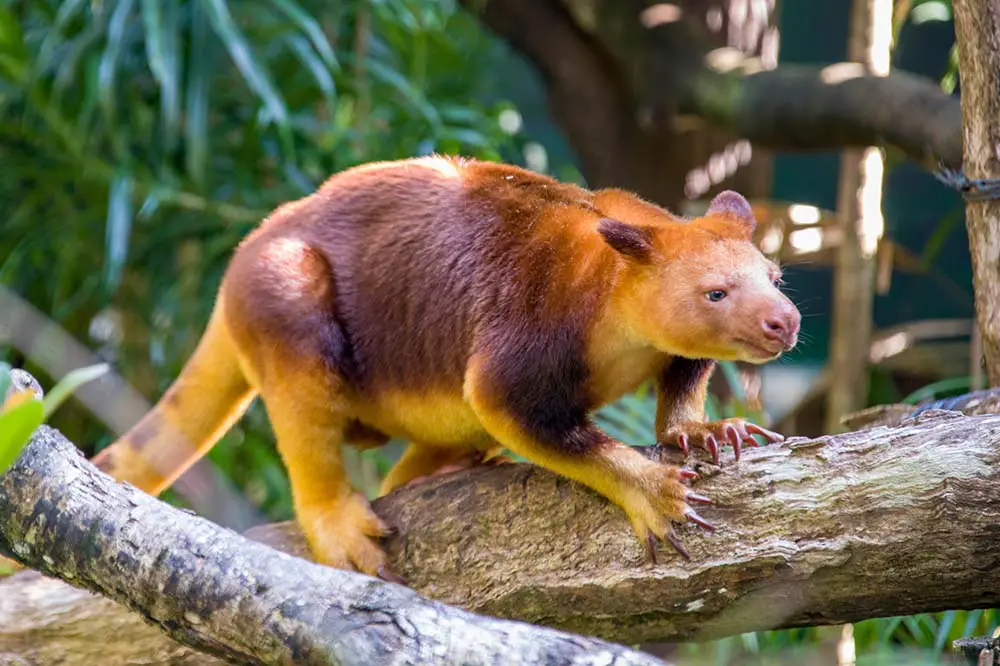
A prehensile tail can also come in handy both for balance and grip and is used by many types of animals, including the panther chameleon and the emerald tree boa who use their tails to secure themselves while coiled. Gibbons are especially interesting; they are the most bipedal of all non-human primates but instead of possessing a prehensile tail, use their long arms to balance while moving elegantly across narrow branches.
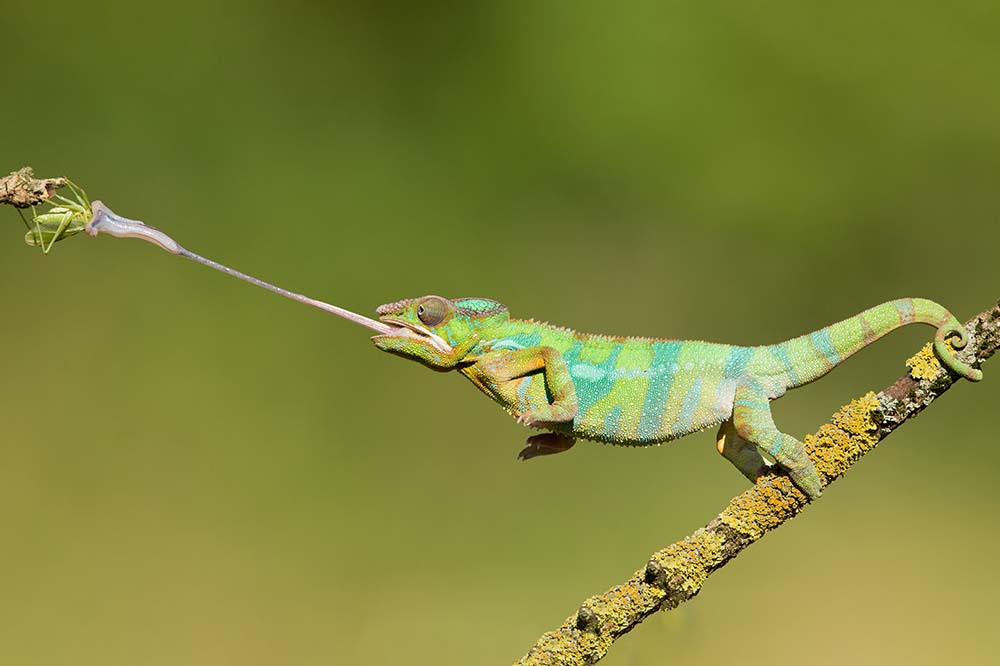
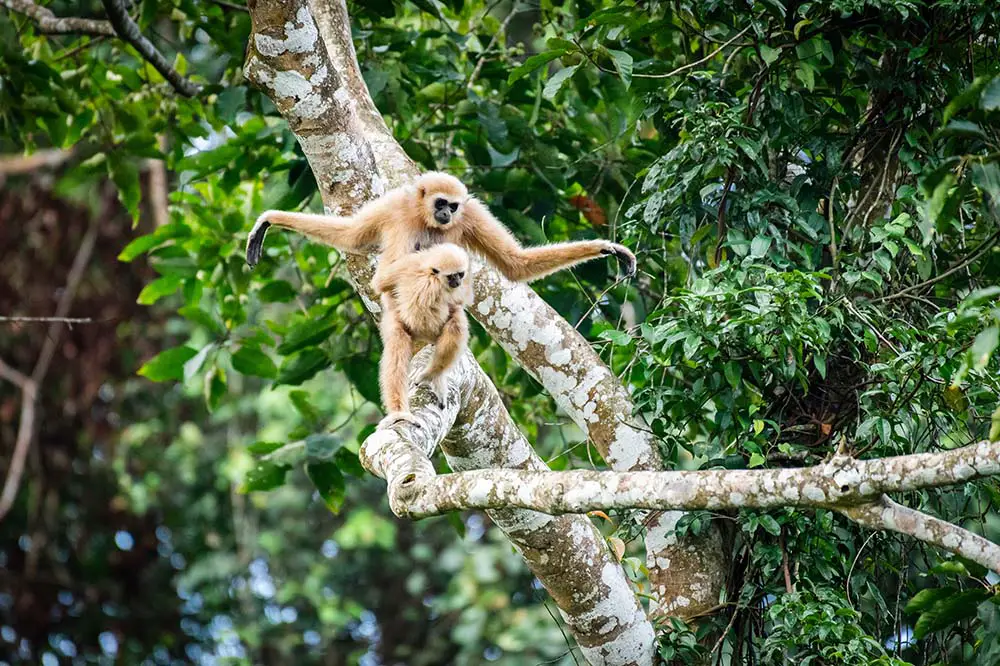
Left: Panther chameleon | Milan Zygmunt / Shutterstock & Right: Common gibbon in Khao Yai National Park | Kittipong Chotitana / Shutterstock
To excel in the trees, all arboreal animals have excellent grasping capabilities but this doesn’t necessarily mean a strong grip; sloths, for example, are not known for their athleticism but instead have long curved claws which they position in a slow methodical motion. Primates on the other hand are masters of movement and use brachiation, a method of motion unique to certain arboreal species to move efficiently through the canopy. Birds also have excellent grip; one of the best examples being the woodpecker who secure themselves using their feet while drilling their nest.

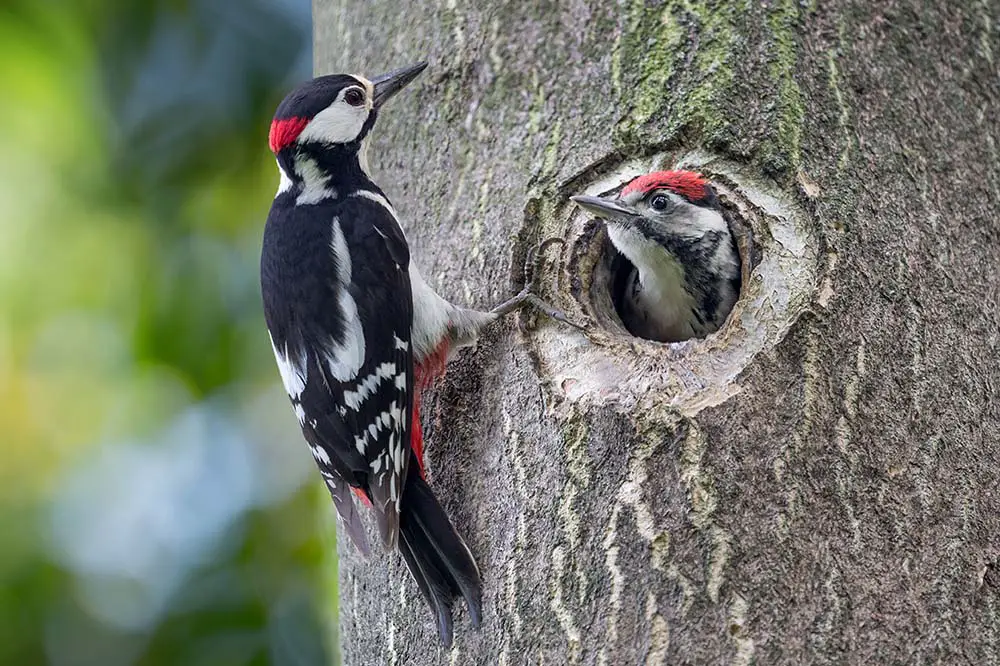
Left: Sloth hanging on tree branch in Costa Rica | Lukas Kovarik / Shutterstock & Right: Father and son woodpeckers | Massimiliano Paolino / Shutterstock
As the saying goes, what goes up must come down. Descending is one of the most difficult parts of life in the trees. Many animals have evolved membranes between their limbs that facilitate a type of gliding flight, allowing them to either transition between trees or descend to the forest floor. These creatures include mammals such as colugos, reptiles such as Draco lizards and amphibians such as flying frogs.
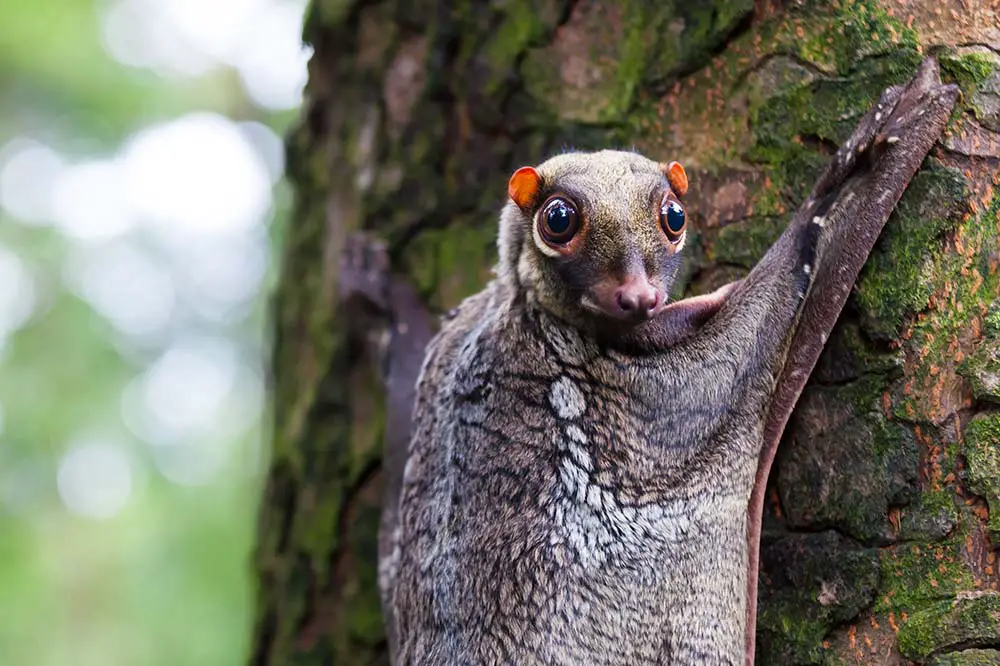

Left: Sunda flying lemur | Joshua Davenport / Shutterstock & Right: Draco Lizard | NeagoneFo / Shutterstock
Squirrels are one of the most efficient descenders; they possess the ability to swivel their back ankle joints and use their sharp claws to grip while sprinting headfirst down the trunk. Animals who do not possess this flexibility, simply climb down the tree backwards such as the lynx which you can learn about in this article along with all other members of the Felidae family, better known as wild cats.

